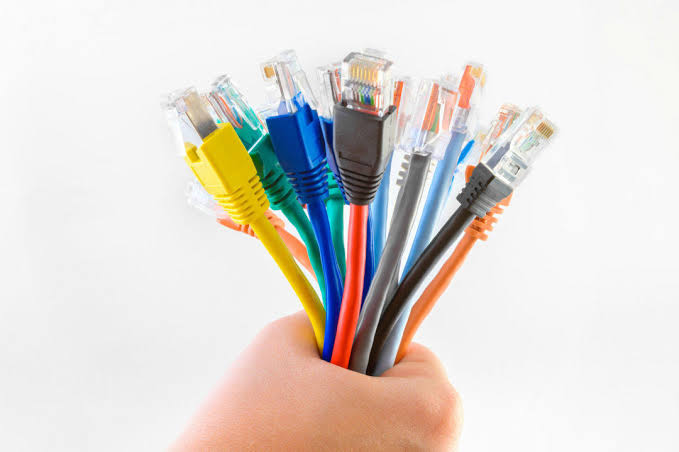Physical Address
60 Ekwema Cres, Layout 460281, Imo
Physical Address
60 Ekwema Cres, Layout 460281, Imo

Ever wondered how your computer talks to the internet? Or how your office printer connects to your laptop? The answer lies in a simple, yet powerful tool: network cables.
Network cables are the unrecognized bedrock of our communication systems, acting as the physical links that allow data to travel between devices.
From homes to offices, these cables are essential for our interconnected lives, enabling smooth communication and data sharing.
Network cables play a huge role in our daily lives. They make everything from simple home internet to complex corporate data exchanges possible. Without them, our ability to communicate effectively would be seriously hampered.
In this article, we will look closely at network cables, what they are, types, importance, uses, and future developments.
In a simple definition, a network cable is a type of wiring that connects different devices within a network, allowing them to talk to each other and share information.
These cables are essential for setting up wired connections between computers, routers, switches, and other network equipment.
Network cables can transmit two main types of signals:
Knowing the difference between these signal types is crucial for choosing the right cable for specific networking needs.
Read Next: Subsea Cable Across Africa Cuts Again, Causing Major Network Disruption
There are various types of network cables, each designed for different applications and environments. Here are some of the most common types:
Twisted pair cables are among the most commonly used network cables today. They consist of pairs of insulated copper wires twisted together to minimize electromagnetic interference.
Characteristics and Uses:
Twisted pair cables are often used in Ethernet networks and come in two main types:
Coaxial cables feature a central copper conductor surrounded by insulating material and a metallic shield.
Structure and Applications:
Traditionally used for television signals, coaxial cables were also used in early Ethernet networks. Their design allows them to transmit high-frequency signals effectively.
Fiber optic cables use thin strands of glass or plastic fibers to send data as light pulses. They are of two types namely:
Advantages in Speed and Distance:
Fiber optic cables provide significantly higher bandwidth than copper cables and can transmit data over longer distances without losing quality.
Read Next: Guinea and Gambia are Set to have New Subsea Cable soon
Understanding the importance of network cables is necessary for anyone working with network infrastructure. They include:
1. Connectivity: Network cables are essential for connecting devices within networks. They enable communication between computers, printers, servers, and other devices, making data sharing and resource access possible.
2. Performance: The performance of a network heavily depends on its cabling system. High-quality network cables can greatly affect data transfer speeds and reliability:
3. Security: Compared to wireless connections, wired networks using network cables offer better security:
Network cables have many uses across different environments. They include:
1. Home Networks: In homes, network cables connect devices like computers, smart TVs, gaming consoles, and routers to ensure stable internet access.
2. Office Networks: Businesses use network cabling to create local area networks (LANs) that link workstations, printers, servers, and other equipment.
3. Data Centers: In enterprise settings, high-capacity fiber optic cabling is often used to manage large amounts of data traffic efficiently.
4. Specific Use Cases: Network cables are crucial for applications needing high bandwidth and low latency such as gaming and streaming services.
Read Next: The Largest Subsea Cable, 2Africa, Lands in Nigeria
As technology continues to advance, so do the capabilities and uses of network cabling:
Finally, understanding what a network cable is and recognizing its importance is vital in today’s connected world.
Network cables serve as the foundation of communication systems across various sectors, enabling connectivity, enhancing performance, ensuring security, and supporting diverse applications from home networks to enterprise environments.
As technology progresses, the role of network cabling will become even more vital in meeting modern communication needs.
A network cable acts as a physical link between devices within a network so they can communicate and share data effectively.
Twisted pair cables transmit electrical signals using copper wires while fiber optic cables use light pulses sent through glass or plastic fibers for faster data transfer over longer distances.
Network cables provide faster speeds, lower latency, better security against unauthorized access, and greater reliability compared to wireless connections that may be affected by interference.
Fiber optic cabling is particularly useful in high-demand environments like data centers or telecommunications where high bandwidth and long-distance transmission with minimal signal loss are essential requirements.